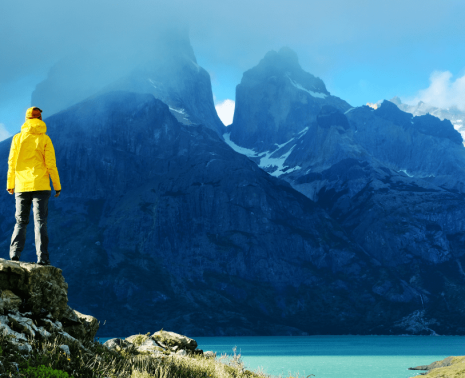
Your trek is all booked, plane tickets bought, maybe even a few things packed. Then as your trip gets a little closer, you start to think, “Oh no, what did I get myself into??” To make sure that you get everything out of your trek that you can, here is a simple Inca Trail training guide so you can be fit and ready for your 4 day, 5 day, or even 9 day trek. (It’s best to start training at least 3 months before your trek if possible, but really some training is better than none.)
Cardio
First thing’s first- you need to make sure your heart is up to the task. To make sure this happens, you’ll need to make sure you do some moderate cardio 3-4 times a week- about the equivalent of running a 5k-10k. For this, it doesn’t really matter what type of cardio you do- running, biking, swimming, step aerobics- the important thing is that you do it. Your heart and lungs will thank you.
Strength Training
Your muscles will be taxed while you are hiking… there’s a lot of walking on uneven ground, using trekking poles for balance, and carrying your day pack with you. You’ll want to make sure your muscles are ready. For purposes of getting in shape for the trek, bodyweight exercises should be sufficient. For your legs, you should incorporate a regimen of lunges, squats, and even taking the stairs instead of the elevator (especially for the Inca Trail, which has a LOT of stairs.) For your upper body, core exercises should be enough- you don’t need to get ripped, just be strong enough to carry a day pack for a few days. Planks, push-ups, back extensions are good, though if you do have weights you can use, rows and overhead presses are also very effective for your back and shoulders.
Hiking
The best way to prepare physically for a really long hike? Go hiking. As much and as often as you can. If you have relatively difficult trails near you, your best bet is get at least two or three longish hikes in before you travel to Peru. If you don’t live near trails, you can train on hills and/or by climbing stairs. You want to get your muscles, joints, and tendons ready for uneven terrain. (Also, this is a good way to break in your hiking shoes/boots… you DO NOT want to start a multi-day hike in the Andes with brand new hiking boots. You will get chafing and blisters and be miserable. Make sure your hiking footwear has been broken in.)
Acclimatization
Unless you already live at a very high altitude, the altitude of your trek will probably be a bit of a shock. Seriously, DO NOT underestimate the altitude. You will want to be in Cusco at least two days before your trek… more if possible. There are many activities you can do to pass the time here, and get your body ready for being active in the altitude. Some great ideas are day walking tours in and around Cusco, or just exploring the city. The second day you’re here you may want to try something a bit more strenuous, like walking up to the Cristo Blanco. But most importantly, you’ll need to just *be* in the altitude for a couple days before even one of the moderate treks. The altitude doesn’t care how fit or out of shape you are… it just randomly attacks with no real indication of who will suffer and who will be completely fine. It’s best to err on the side of assuming you’re probably going to need a few days.
Mental Preparation
This Inca Trail training guide isn’t just about the physical aspect of a multi-day hike. A 4 or 5 day trek in the Andes is as much about mental exertion as physical exertion. There are parts of these trails that are especially difficult- namely uphill pushes to the mountain passes. You may want to stop and tell everyone to go on without you and save themselves. It’s similar to running a long distance or making it through a particularly long Monday at work. You have to be able to know you can do it, even though your body is trying to tell you can’t. These treks are doable for most people, and people of all sorts of fitness levels have completed them. If you do the physical preparation we’ve suggested here, you will be able to finish (barring any accident or illness, god forbid). Use this knowledge to get you up to that pass. “I trained, and that blog said that if I trained I can do this. So I can do this! I’m a beast!” (Side note- “I’m a beast!” may or may not be an actual personal mantra when climbing hills and running marathons… it’s very effective.) Actually, coming up with a personal mantra is also helpful when you’re struggling. They can be inspirational, hilarious, or a mix of the two. Some of our favorites: “I’m the boss of this mountain!” “At the end of this, there will be food!” “Only 10 more steps to the next 10 steps!” “That mountain doesn’t look so tough.” “I love stairs.” Feel free to steal any of these, or make up your own!
A trek through the Andes is an unforgettable experience, with sweeping landscapes and history unlike what you will find anywhere else! Making sure you are physically prepared will ensure that you will fully enjoy your Inca Trail, Salkantay Trek, or whichever you choose! So use this Inca Trail training guide to maximize your experience!
Happy trekking!
What 10 Days of Exploring the Amazon and Machu Picchu Looks Like
Imagine the ultimate Peru travel adventure – trekking to Machu Picchu to reveal the most impressive e left b...
Read Post5 Unique Outdoor Adventures in Argentina That You Probably Haven’t Heard Of
Suppose your dream Argentina travel experience is filled with stunning scenery and thrilling outdoor adventure...
Read PostEverything To Know About The W Trek In Patagonia, Chile
Completing the W Trek in Patagonia is a bucket list worthy experience for any nature-loving traveler. Adventur...
Read Post

 Call
Call 























